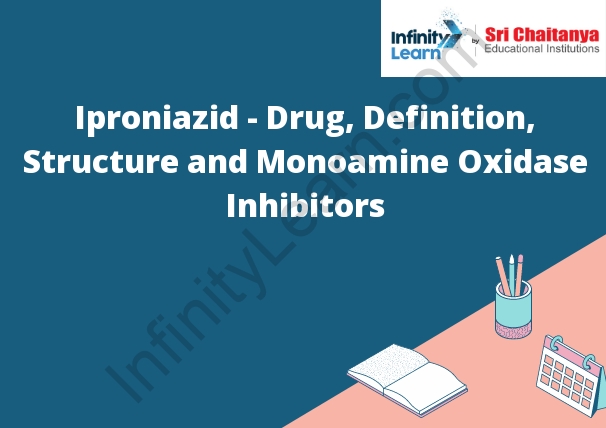Table of Contents
What is Iproniazid?
Iproniazid is a drug used to treat depression. It works by increasing the levels of serotonin and norepinephrine in the brain. Iproniazid is an anti-tuberculosis medication that has used to treat tuberculosis since the 1950s. The mechanism of action of Iproniazid not fully understood, however it thought to work by inhibiting mycolic acid synthesis in Mycobacterium tuberculosis. It is typically used in combination with other anti-tuberculosis medications, such as isoniazid, rifampicin, and pyrazinamide. It is generally well-tolerated, but can cause side effects such as headache, nausea, and vomiting. Iproniazid is a prescription medication and should be used only under the supervision of a healthcare provider.

Iproniazid Structure
It is a monoamine oxidase inhibitor (MAOI) drug that used to treat depression. It works by blocking the action of the monoamine oxidase enzyme, which is responsible for breaking down certain neurotransmitters in the brain. This allows the neurotransmitters to accumulate and also allows to improve the mood.
Monoamine Oxidase Inhibitors
Monoamine oxidase inhibitors (MAOIs) are a type of antidepressant medication. They work by blocking an enzyme called monoamine oxidase. This enzyme breaks down certain chemicals in the brain, including serotonin, norepinephrine, and dopamine. MAOIs prevent the breakdown of these chemicals, which can help improve mood.
There are two types of MAOIs: reversible and irreversible. However reversible MAOIs can stopped if side effects occur. Irreversible MAOIs must discontinued permanently if side effects occur.
MAOIs can cause a variety of side effects, including:
- Nausea
- Dizziness
- Headache
- Insomnia
- Weight gain
- Sexual dysfunction
- Confusion
- Agitation
- Seizures
Monoamine Oxidase Inhibitors Interaction
- MAOIs can also interact with certain foods and medications, which can cause serious side effects. It is important to discuss all medications and dietary restrictions with a healthcare provider before starting MAOI therapy.
- Monoamine oxidase inhibitors (MAOIs) class of medications used to treat depression. MAOIs work by inhibiting the enzyme monoamine oxidase, which breaks down neurotransmitters such as serotonin and norepinephrine. This action helps to increase the levels of these neurotransmitters in the brain, which can improve mood.
- MAOIs generally considered to be less effective than other types of antidepressants, but they may be helpful for people who do not respond to other medications. MAOIs can cause a number of side effects, including weight gain, drowsiness, and dry mouth. They can also interact with other medications, so it is important to talk to a doctor before starting an MAOI.
- There are two types of MAOIs: reversible inhibitors of monoamine oxidase-A (RIMAs) and irreversible inhibitors of monoamine oxidase-A (IMAs). RIMAs are newer and have fewer side effects than IMAs. The most common RIMA is moclobemide (Manerix).
- IMAs include tranylcypromine (Parnate) and phenelzine (Nardil). These medications can cause more side effects than RIMAs, and they can interact with a number of other medications and foods. People taking an IMA must avoid aged cheeses, cured meats, alcohol, and other foods that contain high levels of the amino acid tyramine.
- MAOIs are generally not the first choice of medication for treating depression. However, they may be an option for people who have not responded to other treatments.







